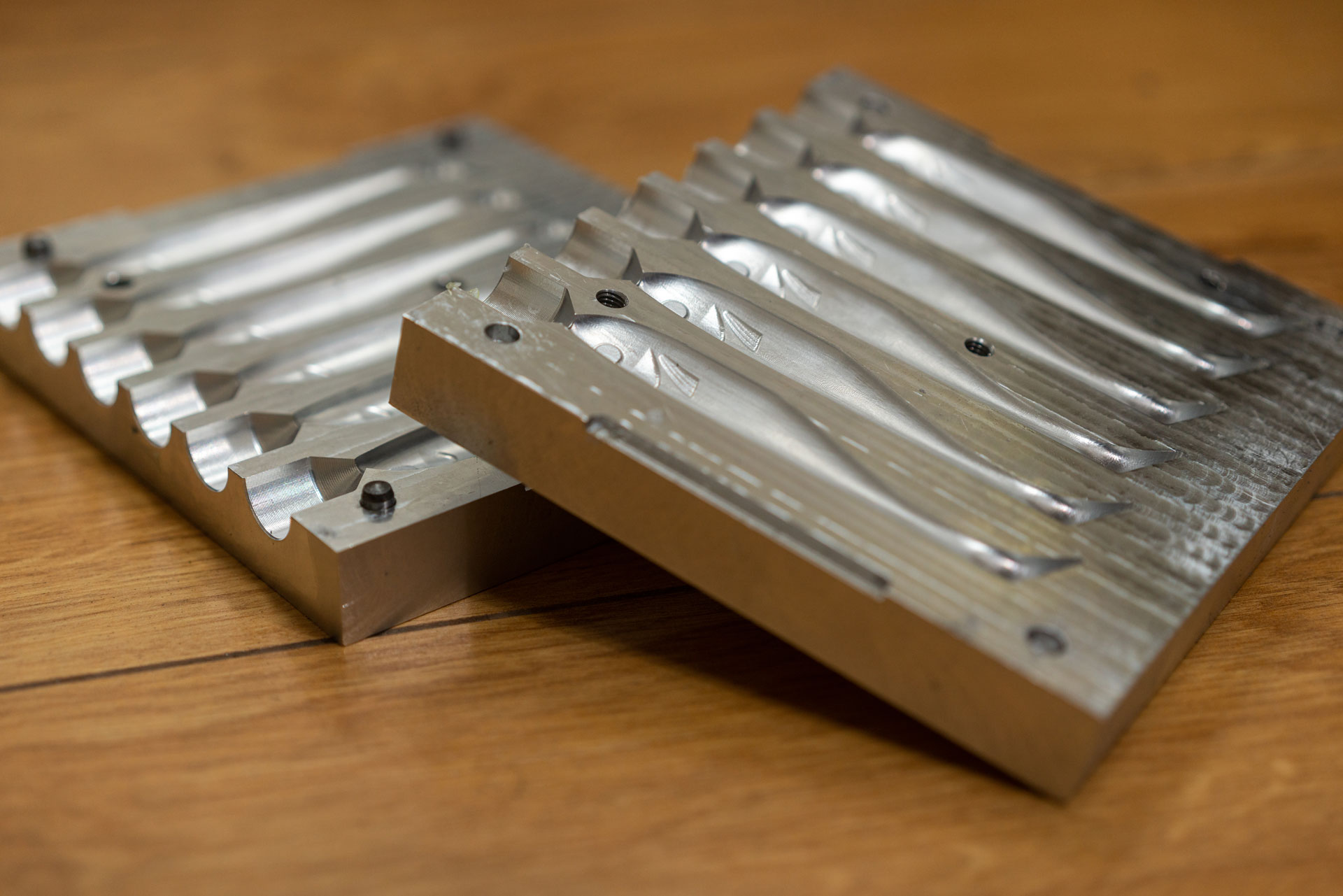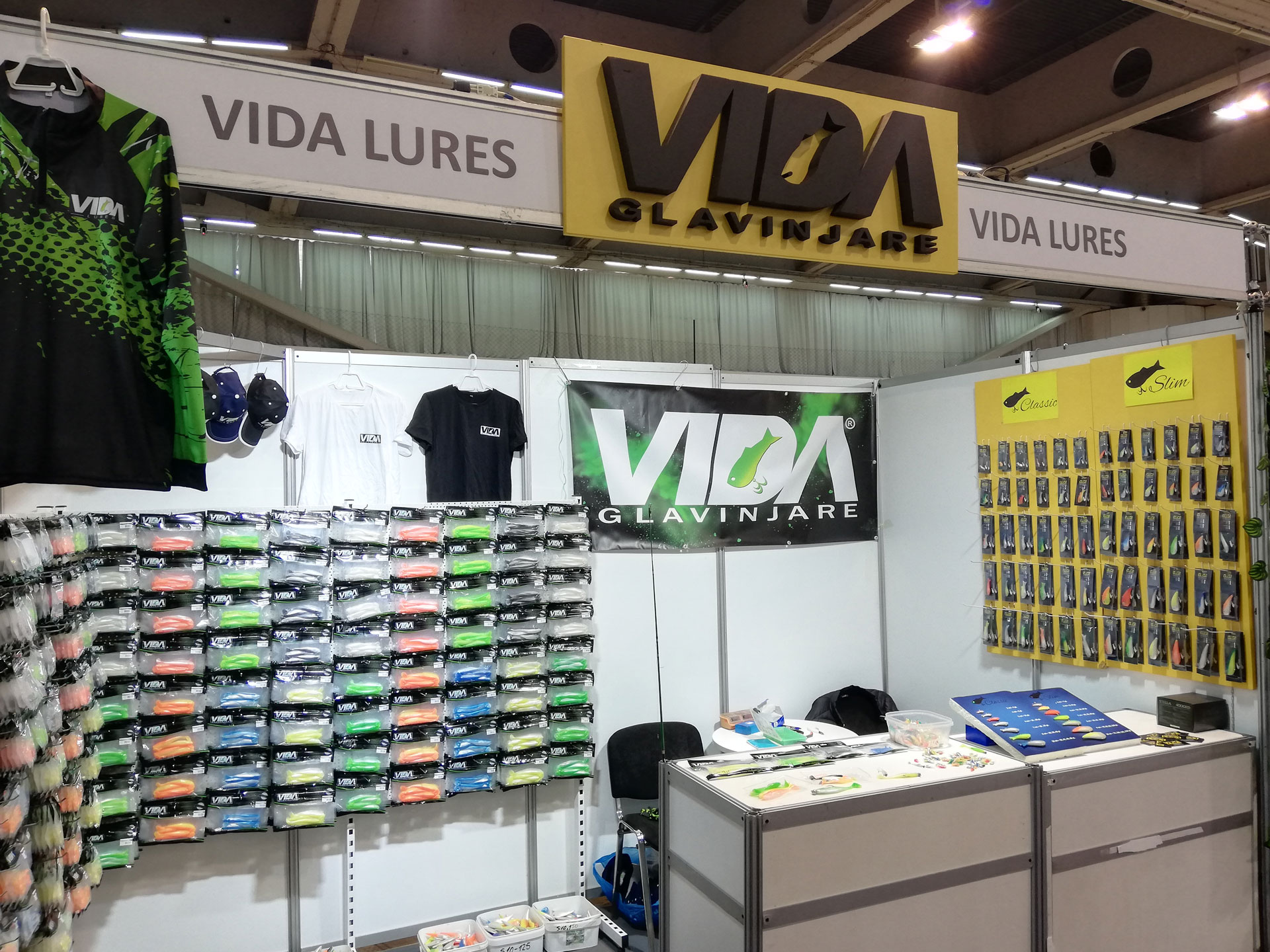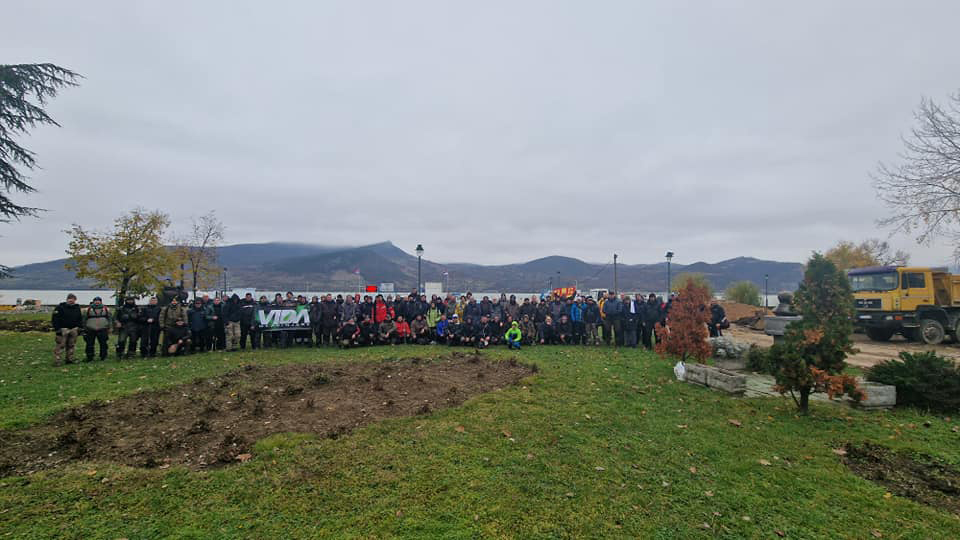
Vida Lures workshop
The story of Vida Lures begins in 2011 when Vladimir Vidanović, also known as Vida, realized that the most beautiful thing in life is to do what you love and know.
After several years of research, frequent trials and changes, and working with equipment that did not meet his criteria, Vida has achieved a level of quality that is on par with international standards. The establishment of the company, professional equipment and machinery, modernization of production, and expansion of the workforce have contributed to the improved quality of the products that now come out of Vida's workshop.
Today, Vida distributes his fishing lures in over 70 stores in Serbia (I didn't even know there were that many) and over 50 stores abroad.
Numerous photos featuring catches by satisfied anglers, participation in expos, and positive reactions on social media were a clear indication of the growing interest in Vida's lures. The Classic or Slim variant sparked frequent debates on angling forums at that time. It didn't take long for everyone to find their preferred model, depending on the type of water they fished: from ponds and gravel pits to small and large rivers, all the way to the sea. From trout to tuna.
After several years of research, frequent trials and changes, and working with equipment that did not meet his criteria, Vida has achieved a level of quality that is on par with international standards. The establishment of the company, professional equipment and machinery, modernization of production, and expansion of the workforce have contributed to the improved quality of the products that now come out of Vida's workshop.
Today, Vida distributes his fishing lures in over 70 stores in Serbia (I didn't even know there were that many) and over 50 stores abroad.
Numerous photos featuring catches by satisfied anglers, participation in expos, and positive reactions on social media were a clear indication of the growing interest in Vida's lures. The Classic or Slim variant sparked frequent debates on angling forums at that time. It didn't take long for everyone to find their preferred model, depending on the type of water they fished: from ponds and gravel pits to small and large rivers, all the way to the sea. From trout to tuna.
Vida Lures fishing lures
"The most beautiful lure of all that I have seen so far does not exist." Vida knows that. That's why he focuses on the reliability of the materials he uses, the originality, and the effectiveness of his lures.
The most crucial part in fishing lures is the wire. Only the highest quality is used, specifically stainless steel wire. What sets VIDA LURES apart from others is the "doubled wire on the body of the lure." Simply put, with it, you can reel in a horse, and more importantly, it doesn't rust. This applies even when used in saltwater environments.
The second component of fishing gear is the hook. The VMC hooks that VIDA LURES incorporates into his tackle are well-known for their sharpness and durability. Additionally, their finish is resistant to rust, rendering them everlasting.
The plastisol used by Vida for making fishing lures is a durable, strong, and resistant material. It can withstand harsh fishing conditions. A premium fishing lure must endure impacts against sharp rocks and scraping against shells while searching the bottom. That's why Vida's products are more durable than the competition, as well as compared to lures made of balsa or plastic because they are elastic.
VIDA LURES are of original design. Several top-notch anglers were involved in their creation. For a full four years, they pointed out flaws, shortcomings, and strengths while fishing with them "from Vardar to Triglav." It's fortunate that Vida didn't end up in a mental institution during that time. Now we see that the effort and time invested were worthwhile endeavors.
Since all VIDA LURES are injection-molded into aluminum molds, each one of them carries a warranty for the declared weight and length.
What most commonly interests merchants is packaging. PVC film with clear product information indicates a global standard that has been confirmed in foreign markets. Of course, the packaging includes the official VIDA LURES "barcode" and declaration. To us anglers, this means nothing, but for retailers, it is a priority.
The most crucial part in fishing lures is the wire. Only the highest quality is used, specifically stainless steel wire. What sets VIDA LURES apart from others is the "doubled wire on the body of the lure." Simply put, with it, you can reel in a horse, and more importantly, it doesn't rust. This applies even when used in saltwater environments.
The second component of fishing gear is the hook. The VMC hooks that VIDA LURES incorporates into his tackle are well-known for their sharpness and durability. Additionally, their finish is resistant to rust, rendering them everlasting.
The plastisol used by Vida for making fishing lures is a durable, strong, and resistant material. It can withstand harsh fishing conditions. A premium fishing lure must endure impacts against sharp rocks and scraping against shells while searching the bottom. That's why Vida's products are more durable than the competition, as well as compared to lures made of balsa or plastic because they are elastic.
VIDA LURES are of original design. Several top-notch anglers were involved in their creation. For a full four years, they pointed out flaws, shortcomings, and strengths while fishing with them "from Vardar to Triglav." It's fortunate that Vida didn't end up in a mental institution during that time. Now we see that the effort and time invested were worthwhile endeavors.
Since all VIDA LURES are injection-molded into aluminum molds, each one of them carries a warranty for the declared weight and length.
What most commonly interests merchants is packaging. PVC film with clear product information indicates a global standard that has been confirmed in foreign markets. Of course, the packaging includes the official VIDA LURES "barcode" and declaration. To us anglers, this means nothing, but for retailers, it is a priority.
A conversation with Vida
# Which anglers most commonly use VIDA LURES?
I would say pike anglers and catfish anglers. Although, I mostly interact with people in that circle. In fact, on social media and forums, I see no limits when it comes to catches. Anglers fish for literally everything, sometimes with a specific target in mind, while other times they have unexpected and strange catches. As a special catch, I would mention catching zander and chub.
# How should jerkbaits be retrieved?
# How important are the competitions you participate in and sponsor?
# In VIDA LURES, you produce lures in various weights but fewer colors, why is that?
# Where can VIDA LURES be buy?
Vida's tips
- It sometimes happens during lure fishing that we get snagged on the bottom or some obstacle. Strong pulling in an attempt to free the vibro lure can cause the wire inside it to bend. This can sometimes alter its balance. If the lure does not move in a straight line, it is necessary to bend the wire to the left or right. This will return it to its original position, allowing you to continue fishing.
- If for some reason you need to replace treble hooks (due to wear or breakage), make sure to use hooks of the same size and weight. Otherwise, you may disrupt the lure's vibration.
- If you happen to damage your lure (or it gets torn by a toothy fish), you can bring it back to "life" within a few seconds. Apply super glue or use the flame of a lighter to repair it.
Tekst by Oliver Kuzmanovic




